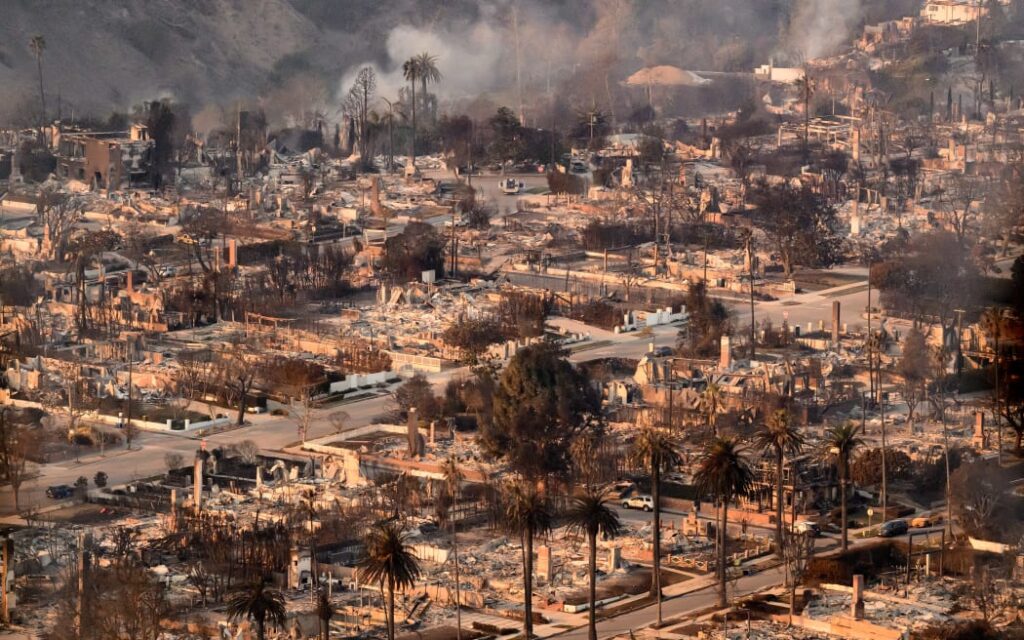A catastrophic fire swept through parts of Los Angeles this week, leaving devastation in its wake as thousands of structures were reduced to ashes. The fire, which began on the outskirts of the city, rapidly spread due to strong winds and dry conditions, typical of California’s fire-prone climate. Officials estimate that over 3,000 buildings, including homes, businesses, and community facilities, have been destroyed, displacing thousands of residents and causing untold emotional and financial turmoil.
The blaze, dubbed the “Hillside Inferno,” ignited late Monday evening and quickly escalated into one of the most destructive wildfires in recent history. Firefighters have been working tirelessly around the clock to contain the flames, battling not only the fire itself but also the harsh conditions that have made their task even more challenging. High temperatures, low humidity, and strong Santa Ana winds have fueled the fire’s rapid expansion, leaving little time for residents to evacuate.
Emergency shelters have been set up across the city, providing temporary refuge for those who have lost their homes. Local organizations and volunteers have mobilized to deliver essential supplies such as food, water, and clothing to the displaced.
The environmental impact of the fire is also significant. Vast swathes of forested land have been consumed, and air quality across the region has plummeted due to thick smoke and ash. Authorities have issued health warnings, urging residents to remain indoors and wear masks if venturing outside.

Officials are now investigating the cause of the fire while focusing on recovery efforts. The tragedy has reignited discussions about fire prevention strategies and the importance of addressing climate change, which experts warn is exacerbating the frequency and intensity of wildfires in California and beyond.


